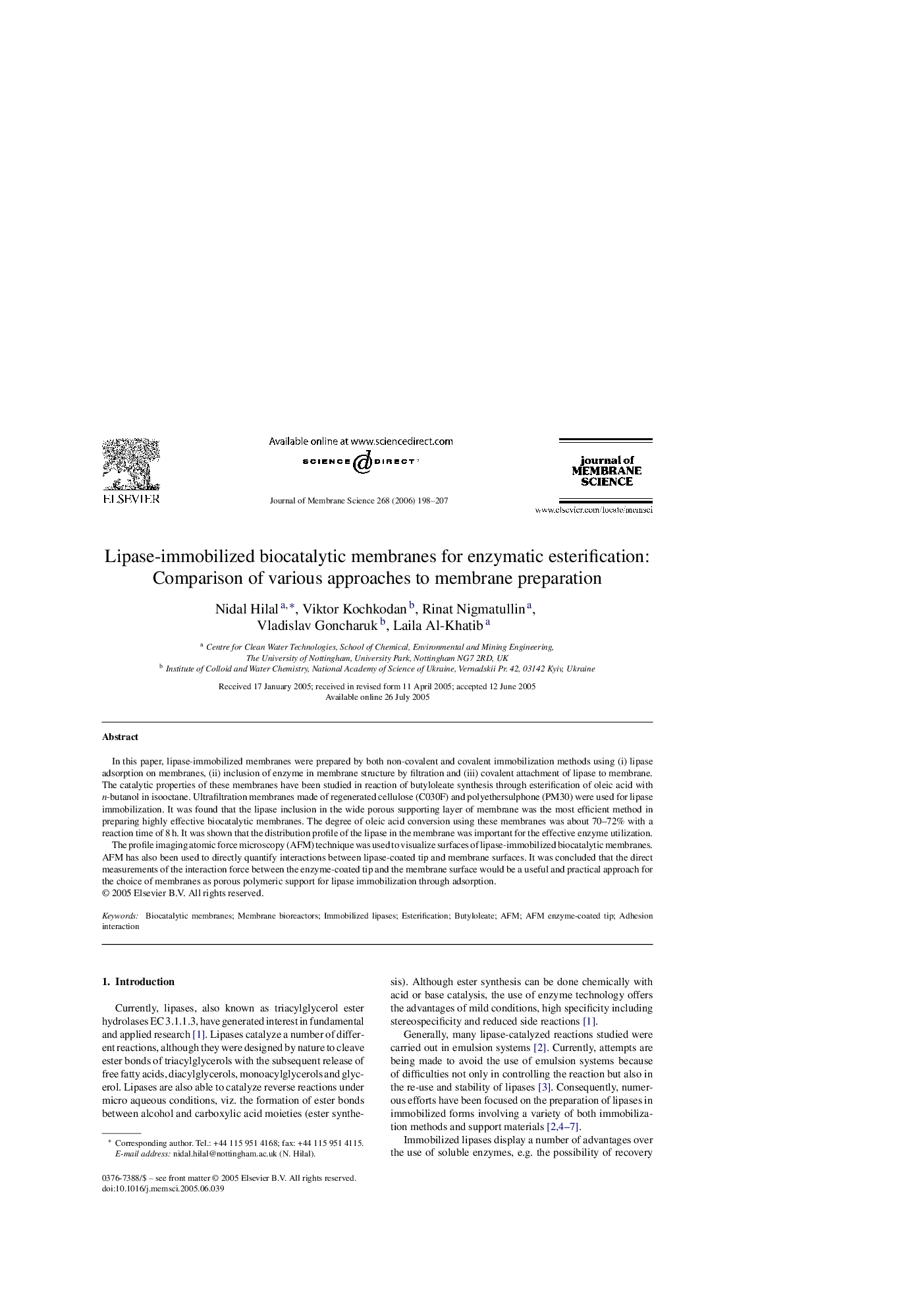| Article ID | Journal | Published Year | Pages | File Type |
|---|---|---|---|---|
| 639733 | Journal of Membrane Science | 2006 | 10 Pages |
In this paper, lipase-immobilized membranes were prepared by both non-covalent and covalent immobilization methods using (i) lipase adsorption on membranes, (ii) inclusion of enzyme in membrane structure by filtration and (iii) covalent attachment of lipase to membrane. The catalytic properties of these membranes have been studied in reaction of butyloleate synthesis through esterification of oleic acid with n-butanol in isooctane. Ultrafiltration membranes made of regenerated cellulose (C030F) and polyethersulphone (PM30) were used for lipase immobilization. It was found that the lipase inclusion in the wide porous supporting layer of membrane was the most efficient method in preparing highly effective biocatalytic membranes. The degree of oleic acid conversion using these membranes was about 70–72% with a reaction time of 8 h. It was shown that the distribution profile of the lipase in the membrane was important for the effective enzyme utilization.The profile imaging atomic force microscopy (AFM) technique was used to visualize surfaces of lipase-immobilized biocatalytic membranes. AFM has also been used to directly quantify interactions between lipase-coated tip and membrane surfaces. It was concluded that the direct measurements of the interaction force between the enzyme-coated tip and the membrane surface would be a useful and practical approach for the choice of membranes as porous polymeric support for lipase immobilization through adsorption.
